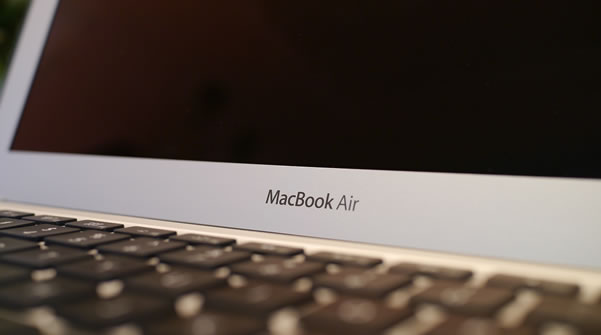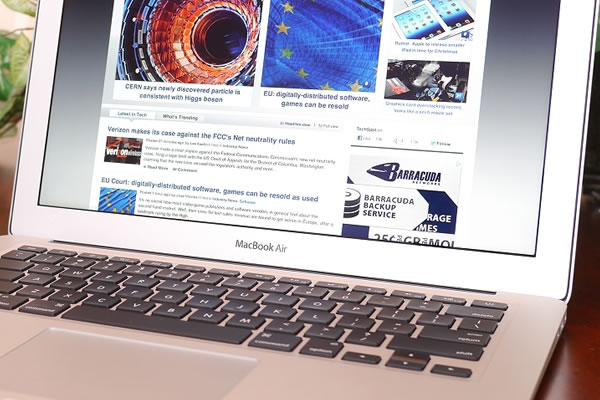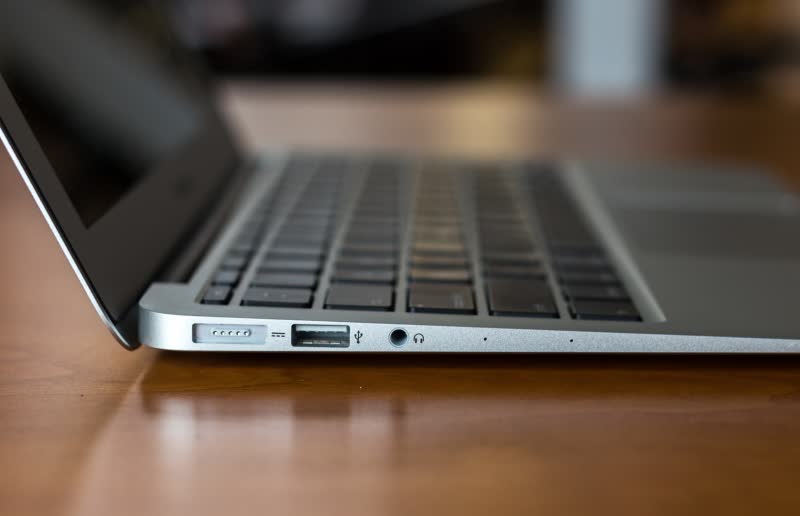Usage Impressions, Conclusion
Apple's refresh of the venerable MacBook Air is a solid one, even if it didn't receive the Retina display upgrade that many were hoping for ahead of its announcement. The 1440 x 900 native resolution looks great behind the glossy display while the viewing angles are some of the best I've ever seen on a notebook, both horizontally and vertically.
Typing on the Air's keyboard is a pleasant experience, as is using the large touchpad which thankfully doesn't get in the way when typing as I have experienced on some other notebooks. The touchpad did seem a little bit finicky in Windows but this can be chalked up to non-optimized drivers as it worked perfectly in OS X. Just don't get your hopes up on improved trackpad Windows support as I understand this has been a constant for years now.

The stereo speakers are tucked deep inside the Air with audio resonating from under the keyboard. This method works well as it means Apple doesn't have to tamper with the clean lines by adding speaker grills and the user isn't required to use the system on a hard surface to get optimal sound as you would with downward-firing speakers.
As you can imagine, the speakers are pretty small so bass is pretty much non-existent, but the mids and especially the highs are certainly there - maybe a little bit too much of the latter. The speakers get decently loud and don't distort at high volumes, even in bass-laden songs.
I conducted our standard notebook battery tests on the MacBook Air. Our video playback test consists of looping a 720p rip of the movie Inception at full screen with max brightness and Wi-Fi disabled. This is a taxing test that resulted in 5 hours and 8 minutes of usage.

MacBook Pro Retina (review coming soon) vs. MacBook Air 13"
Our endurance test is run with five Firefox windows open with the "Reload Every" add-on refreshing each page every five minutes to simulate real-world browsing. Max screen brightness is used and Wi-Fi is enabled. This test resulted in 5 hours and 21 minutes of life. Apple rates the 13-inch Air for up to 7 hours of wireless web usage, which is entirely possible if you are used to dialing down the brightness settings when not needed.
Our informal YouTube 4k resolution video test taxed the CPU up to 76 percent. The video feed remained lag-free despite the high processor utilization. For comparison, the HP Omni 27 All-in-One I recently looked at topped out around 50 percent. The Intel CPU in that system is clocked much higher, however; 3.0GHz versus 1.8GHz.
The Mac Air remained extremely quiet during our tests and only spun up to an audible level during heavy loads, thanks to Intel's Ivy Bridge CPU and the lack of a spinning hard drive and optical drive. The top left side of the Air (when looking down at the keyboard) would get extremely warm during intense use, but it was nothing to be concerned with since your hands wouldn't ever be resting in this area.

As typical with many Apple products, it's going to be a serious chore to get inside the system and perform any type of maintenance or upgrades. And once you are inside, there really isn't a whole lot you can do since the RAM and SSD are proprietary. iFixit gives the Air a repairability score of 4 out of 10, with 10 being the easiest to repair. But this isn't really news as the Air has always compromised that end in favor its super slim chassis.
The mid-2012 MacBook Air is a very solid offering and continues to be a target for many notebook manufacturers, and for good reason. Four years after its unveiling, the Air is still one of the sexiest notebooks on the market and with the recent slight price adjustment, it seems to be competing well even on value terms. Intel is likely to put some extra pressure on the Air with second and third generation ultrabooks, many of which are shaping up to be real contenders, at least on paper. But even still, the Air is the system that all other Windows ultrabooks strive to be like and that's quite the complement.
Also read: Apple Tax or Not? Ivy Bridge Ultrabooks vs. 13" MacBook Air
Pros: Great looks with a lasting impression. Balance between performance, portability and battery life, doesn't really get any better than this. Good value.
Cons: In the short term, users may favor HDMI instead of Thunderbolt. Costly upgrades all around. Retina version may see the light in the coming 12 months.
